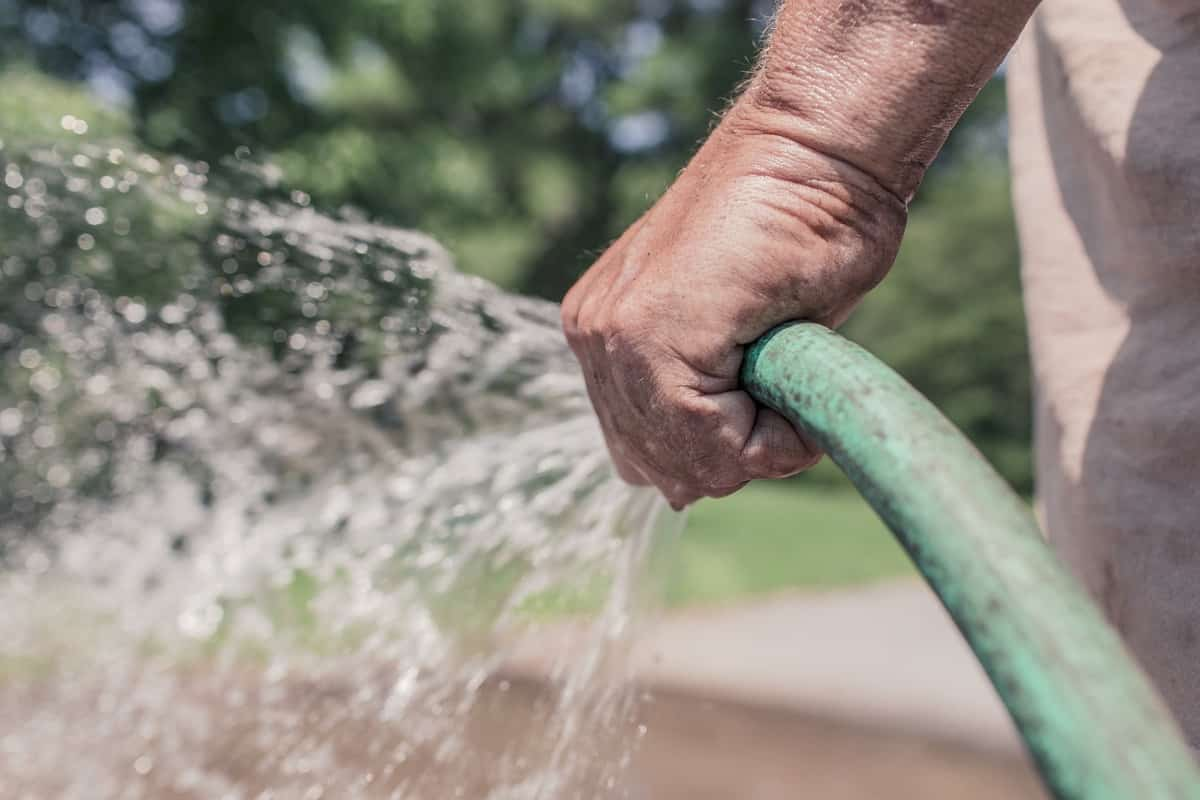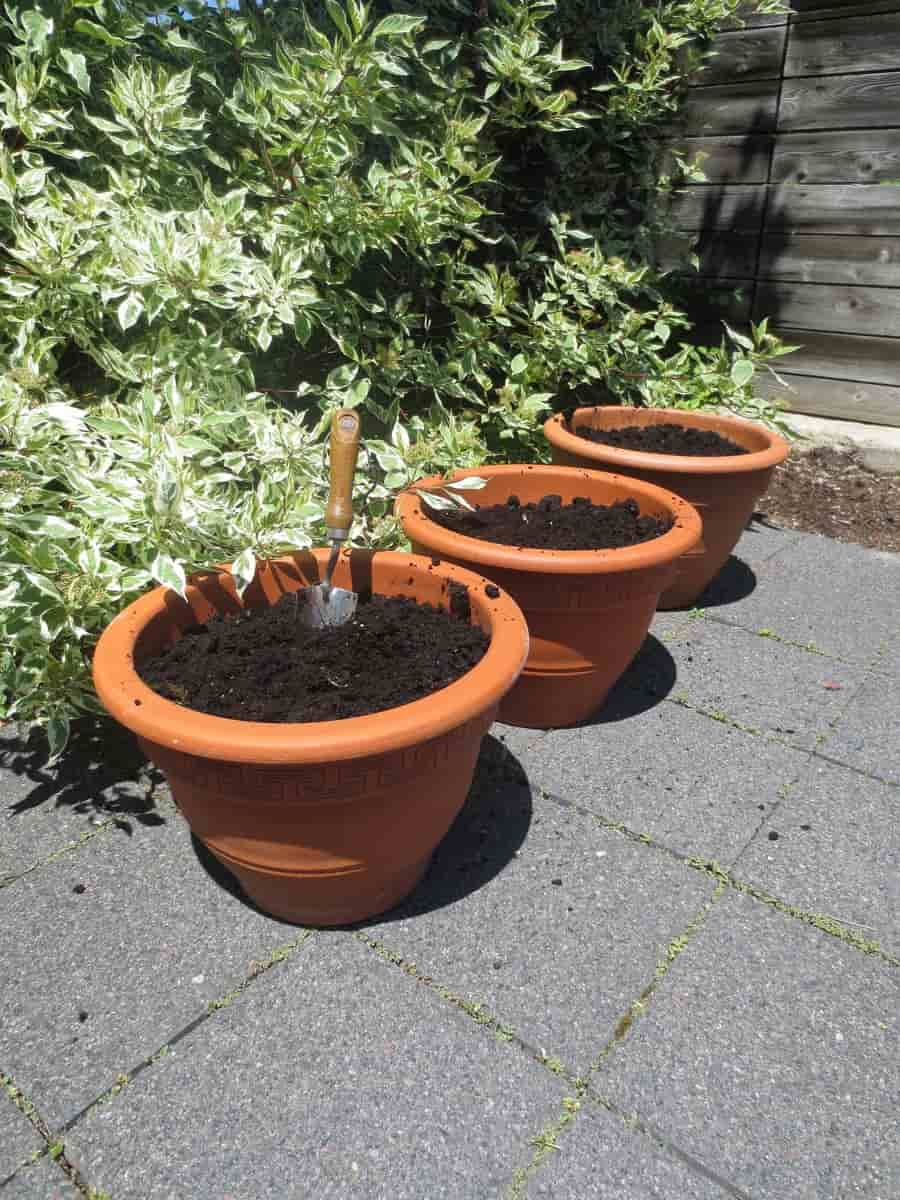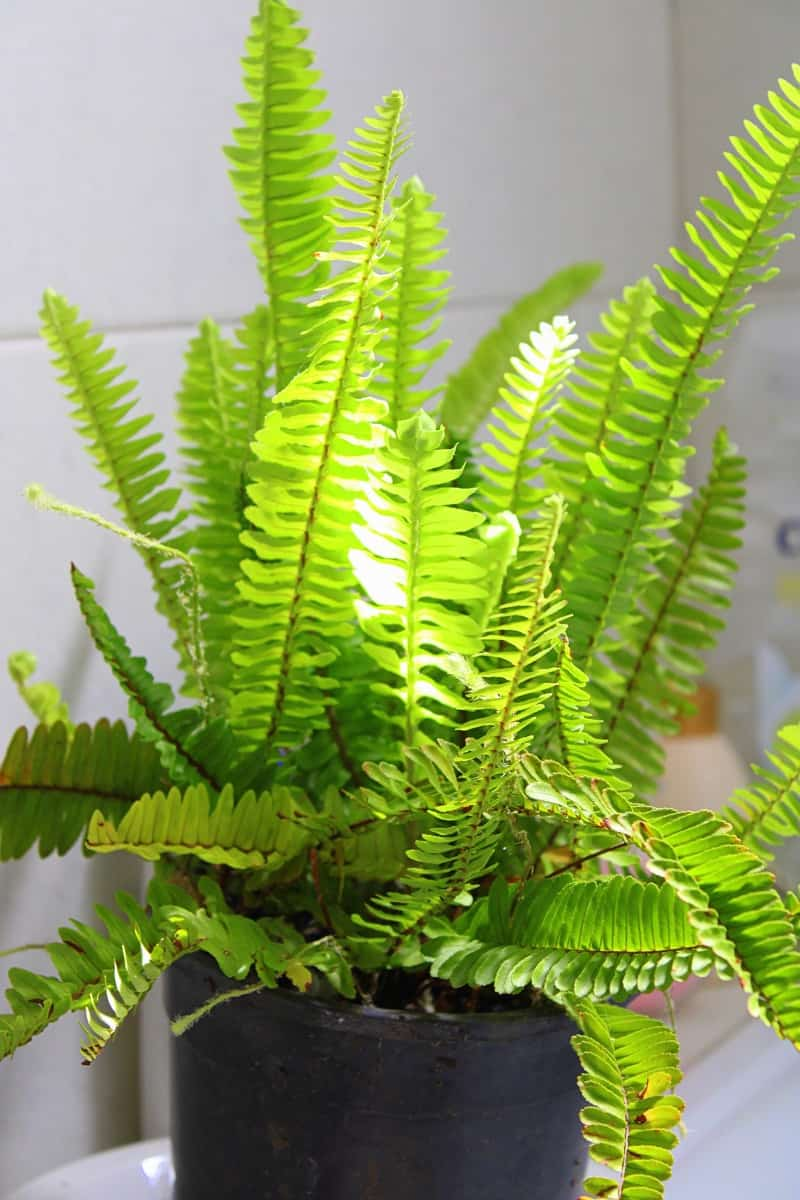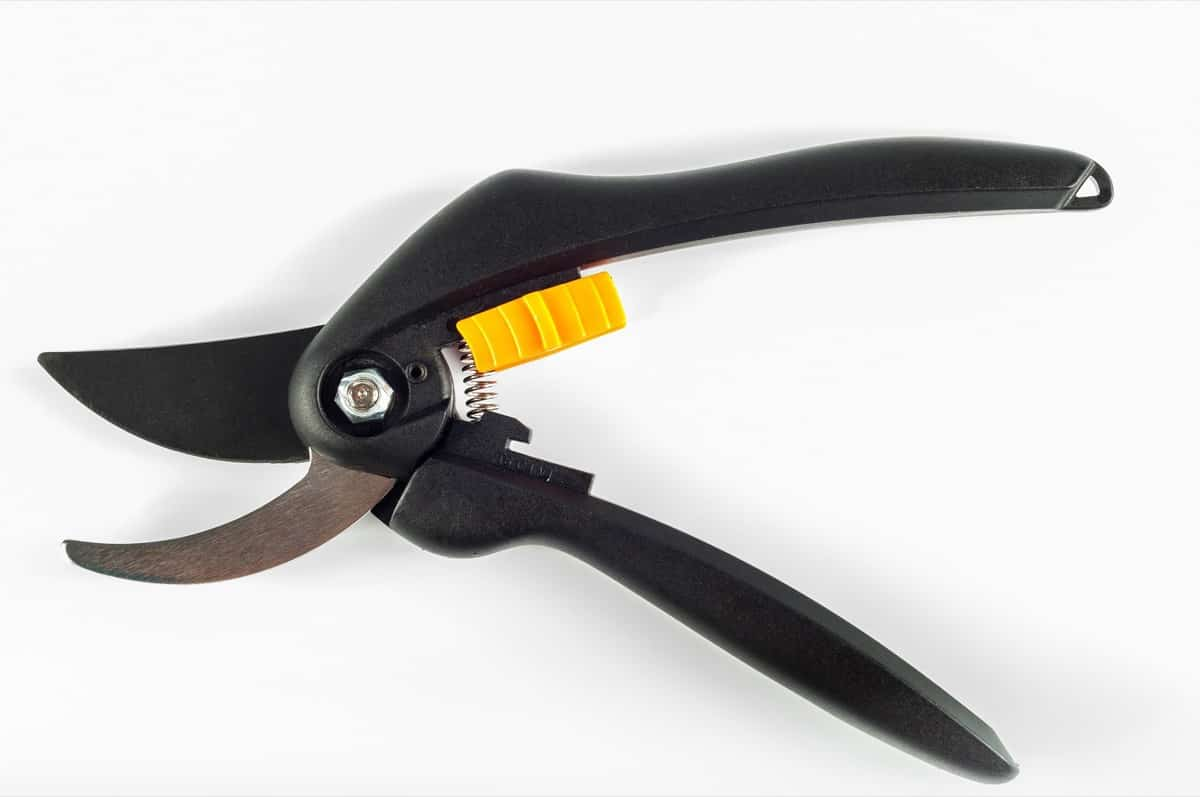Boston Ferns are one of the easiest plants to grow in your garden and make a wonderful addition to any container. Boston Ferns are interesting plants because they don’t need a lot of direct sunlight, making them perfect for apartments or offices. Plus, they grow quickly and don’t require a lot of maintenance. Boston Ferns are also one of the most popular houseplants and can be found in many homes. A few types of Boston Fern are typically grown in pots, but which type is best for you depends on your climate and the size of your pot.
How to grow and care for Boston Fern plant in pots
Types of Boston Ferns
- Compacta – Boston Ferns are easy to grow and make a great addition to any home or office. There are several types of Boston Ferns, each with unique characteristics, so choosing the right one for your space is important. The compacta type is the most common and is typically small in size. It’s perfect for smaller spaces because it doesn’t take up a lot of room and can be easily moved. This type of Boston Fern is also low-maintenance, requiring minimal water and nutrients.
- Florida Ruffle – Ruffles are one of the most popular types of Boston Fern. They are easy to grow and have a lush green frond. These Ferns prefer moist soil and full sun but can also be grown in partial shade.
- Whitmanii – Whitmanii is a type of Boston Fern that can be grown in a pot. It is hardy and grows quickly. This Fern is popular for its attractive appearance and ability to tolerate less-than-ideal growing conditions. Whitmanii is a type of Boston Fern typically found in shady areas or wet soils. This Fern is hardy and grows quickly, making it a good choice for beginner gardeners.
- Dallas – Dallas is an evergreen Fern that grows best in moist, well-drained soil. It can be grown indoors or outdoors in a sunny location. The leaves are ovate and have serrated margins.

Climate suitable for growing Boston Fern plant
Boston Fern is a tough and resilient plant that will thrive in most conditions. When growing Boston Fern in pots, ensure plenty of moisture and avoid direct sunlight. You can spray the plants with a water misting system or use an indoor Fern grow light to help them grow faster. Boston Ferns are one of the easier plants to grow in pots. They like the sun but won’t do well in direct sunlight.
Boston Ferns can be grown in various indoor environments, but given its preference for filtered light, it is best suited for locations with southern or eastern exposure. This means that Boston Fern will do well in outdoor pots if the shade provided by nearby trees or buildings helps to offset the direct sunlight. If growing Boston Fern indoors, aim for indirect lighting (such as over a fluorescent light) that covers the plant evenly from all directions. Boston Fern also appreciates bright, white light, so avoids positioning it near windows that flood the room with direct sunlight.
Soil requirement for growing Boston Fern plant
Boston Ferns are easy to grow in pots and add greatly to any home landscape. Like other Ferns, Boston Ferns need well-draining soil that is acidic to slightly alkaline. They prefer partial shade but can tolerate some direct sunlight. Boston Ferns grow best in moist but not waterlogged soil, and they should be watered regularly during the growing season but sparingly in winter.
In case you missed it: Growing Viburnum Plants: A Guide to Propagation, Planting, and Care

Boston Ferns do not need much soil to grow, but they need a well-drained area. They prefer sandy or rocky soils but tolerate many other soils. Give your Boston Fern what it needs in terms of moisture and drainage, and it should be able to thrive in most conditions. The pot has good drainage and is large enough so the roots do not touch each other. The pot should add at least one inch of compost for better soil health.
Water requirement for growing Boston Fern plant
Boston Ferns are not difficult to grow but require a lot of water. The best way to determine your water requirement is to measure the soil moisture level several times throughout the day and add enough water to bring the soil moisture level up to 50% of the dry weight. In the winter, however, they may need a little extra care. You should give 1 inch of water per week during the coldest part of winter. After that, if the soil is still dry, give them a teaspoon of room-temperature water every other week.
In case you missed it: How to Grow and Care for Hydrangeas: A Beginners Guide to Planting to Harvesting

Boston Ferns are relatively easy plants to grow in pots and can thrive in various soil conditions. Fertilize them monthly with a low-nitrogen fertilizer and adjust the amount according to their growth rate. If your Boston Fern is growing in a pot, check the soil occasionally and refill as needed with room-temperature water or vermiculite. Boston Ferns need at least 1 gallon of water per week, but give them more if the soil feels dry.
Pot size required for growing Boston Fern plant
A pot size for growing Boston Ferns should be 12 inches in diameter and 16 inches deep, with good drainage. Boston Ferns need well-drained soil that is enriched with organic matter. Water the plants regularly enough to keep the soil evenly moist, but don’t water them so heavily that the leaves wilt.
In case you missed it: How to Grow and Care for Bloodroot Plant: A Beginners Guide

The best way to water Boston Ferns is to supplement their regular watering with rain or distilled water in the winter when the pot’s drainage is difficult. Fertilize the plants once a month with a balanced fertilizer while growing, followed by once a week when they are established. Place the pot in a sunny spot and water when the surface feels dry.
Propagating Boston Fern plant
From division
Boston Ferns can be propagated by division, taking root easily in water and with a long lifespan. To propagate Boston Fern using division, select a healthy, established plant and cut roots into 3 or 4 pieces. Cut off the bottom of the leaves so that the new roots have plenty of room to grow.
Next, place each piece in a water container and mix the pieces well. Give plenty of sunlight and water daily. You should see new roots growing out of the divisions within two weeks. Once the roots are firmly established, remove the pieces from the water and replant them in fresh soil.
From spores
Boston Fern is not difficult to propagate from spores, but there are a few things to keep in mind. First, make sure the spores you collect are fresh. Second, ensure the surface on which you’re growing the spores is clean and debris-free. Place the spores on a moist surface and let them sit for several days.
Once they have germinated, remove them to a dark place and keep them warm until they root. Germination should take anywhere from 2-6 weeks. At the end of the germination period, you will inspect your fern spores for signs of growth, such as roots and new leaves.
Boston Fern plant care
Fertilizer requirement for growing Boston Fern plant
Boston Fern thrives when grown in containers with good drainage. A fertilizer high in nitrogen is necessary for these plants, but other nutrients may also be beneficial depending on the specific variety of Fern being grown. Boston Ferns do not like over-watered and will rot if they receive too much moisture. Boston Fern is an easy-to-grow plant that is perfect for beginners. The Boston Fern grows quickly in a well-lit, soil-rich environment. You will need to fertilize your Boston Fern regularly with a balanced fertilizer to keep it healthy and flourishing.
In case you missed it: How to Grow and Care for Chinese Evergreen Indoors: Tips and Ideas for Beginners

Fertilize your Boston Fern in the spring and summer with a high-nitrogen fertilizer. For the fall and winter, switch to low-nitrogen fertilizer. A good starting point for fertilizing Boston Fern in pots is to use an all-purpose fertilizer high in nitrogen and phosphorus. You can also add a water-soluble fertilizer for plants once a month during the spring, summer, and fall. Boston Fern can also be supplemented with compost or humus to help improve soil condition.
Pruning Boston Fern plant
Pruning begins by measuring your Fern’s height from its base to the top of its fronds. This will give you an idea of how much growth you can expect in the next year or so. Remove any dead or diseased branches that are below the healthy ones. Cut off all branches more than a foot long at the stem, leaving a sturdy stub at the branch’s base for new growth.
In case you missed it: How to Grow and Care for Arrowhead Vines Indoors

You can either clip off entire branches or pinch off the deadwood. Use a pair of sharp garden shears or a hedge trimmer with a large blade to make the cuts. Prune in late winter or early spring, after new growth has stopped but before the plants start to flower. This will ensure that the plants get their largest and healthiest leaves. Remove any diseased or damaged leaves, as these will not regrow and may cause the plant to die prematurely.
Repotting Boston Fern plant
Boston Fern is the most popular houseplant, and for a good reason. These hardy plants can grow indoors, from small pots to large planters. Unlike other Ferns, Boston Ferns do not require high humidity levels or always wet soil. They prefer slightly dry conditions. To repot a Boston Fern, first, make sure that you have determined the plant’s pot size. For most Boston Ferns in smaller pots, a 12-inch diameter pot will work well.
For larger plants in larger pots (18 inches or more), use a 16-inch diameter pot. Once you have determined the pot size, carefully remove the old soil and roots with a garden trowel or fingers. Replace the soil with fresh compost or loam and spread it evenly around the tree’s base. Water well and allow the plant to soak up water before placing it back in its new home.
Boston Fern plant care in winter
Boston Fern is a hardy plant that thrives in a moist, cool environment. In winter, you should water your Boston Fern regularly and fertilize it once a month with a balanced fertilizer. If you live in a cold climate, protect your Boston Fern by covering it with plastic wrap or screening during the winter.
Boston Ferns are mostly adapted to warm climates but will thrive in winter if given the right care. Boston Ferns grow well when kept at a temperature of around 15°C, with moderate light and humidity. These plants can be kept in a pot or a good container and should be watered regularly but not over-watered.
Pests and diseases of Boston Fern plant and their control
Boston Fern is susceptible to several pests and diseases. The most common pests are aphids, mites, scale, and spider mites. Aphids suck the juices from Boston Fern leaves, causing them to turn yellow and drop off the plant. Mites eat the leaf tissue, leaving small holes in the leaves. Scale insects form shiny brown patches on the leaves and stems. Spider mites attach themselves to the underside of leaves, feeding on plant sap. These pests can be controlled with a suitable insecticide or fungicide applied at the appropriate time.
Biological control of diseases of Boston Fern is an essential part of the management program. Fungi, nematodes, and insects cause these diseases. The most common fungal disease is a black spot, which can be controlled with copper fungicide. Nematode pests include root-knot nematodes and plant bugs. The most common insect pests are leafhoppers and mealybugs. Biological control is the best way to control these pests because it uses natural enemies of the pest.
Conclusion
Growing Boston Ferns in pots is a great way to add greenery to any room in your home. Boston Ferns thrive in a moist, spongy potting mix, unlike other plants that need soil mix. Plus, they are easy to care for. Just water them and occasionally trimming making them a perfect choice for beginners. If you’re looking for an interesting plant addition that will look great on your windowsill or desk, try growing Boston Ferns in pots.
- How to Grow Tomatoes Organically at Home: A Comprehensive Guide
- Organic Gardening on a Budget: Low-Cost Methods and Materials
- Gongura Seed Germination and Planting Methods
- Cabbage Seed Germination and Selection
- Broccoli Seed Germination and Selection
- Asparagus Seed Germination and Variety Selection
- Seasonal Flower Gardening: Best Practices for Spring, Summer, Fall, and Winter
- How to Grow Hibiscus from Flower
- Plantation Ideas for Home Decoration: A Beginners Guide
- Flower Garden Designs and Layouts for Beginners
- Planting and Spacing Techniques in Papaya: A Beginner’s Guide
- Growing Gold: Essential Techniques for Planting Pineapples
- How to Make Kalanchoe Plant Bushy: Home Remedies and Solutions
- 11 Reasons Why Your Gardenia is Not Blooming: Home Remedies and Solutions
- Eco Elegance: The Guide to Designing a Drought-Tolerant Landscape
- Gardening on a Slope: Strategies for Hillside Landscaping
- Nourish and Flourish: Top Organic Mulches for Thriving House Plants
- Everything You Want to Know about Indian Mogra Flower: Discover Uses and Growing
- Green Thumb Success: Expert Tips for Cultivating Greenhouse Pumpkins All Year Round
- Maximize Growth & Flavor: The Ultimate Guide to Companion Planting in Herb Gardens
- How to Control Rhododendron Problems Naturally: Home Remedies and Organic Ways to Fix Them
- Natural Magic: The Remarkable Benefits of Cinnamon for Plants
- Best Steps to Revive Dying Tulip with Natural and Organic Treatment
- 10 Reasons Why Your Angel Trumpet is Not Blooming: Remedies and Treatment
- How to Fix Periwinkle Leaf and Flower-Related Problems: Natural Remedies and Solutions
- How to Fix Zinnias Leaf and Flower Problems: Discover Natural and Home Remedies
- Organic Steps to Induce Lemon Tree Flowers: A Comprehensive Guide
- Bloom Booster: Crafting the Perfect Homemade Bougainvillea Fertilizer
- Optimizing Growth: A Guide to Applying NPK Fertilizer for Potted Plants
- 10 Best Homemade Fertilizers for Rubber Plant: DIY Recipes and Application Method
- How to Boost Female Pumpkin Flowers: Effective Steps for More Flowers and High Yields
- Transform Your Indoor Garden: Top Benefits of Pink Salt for Houseplants
- 10 Best Homemade Fertilizers for Peacock Plants (Calathea): Easy DIY Guide
- Unlock Blooms: 9 Reasons Why Your Potted Chrysanthemum is Not Blooming
- 8 Reasons Why Your Potted Hibiscus is Not Blooming: Fix it with Simple Solutions
- Unlock Blooms: 9 Key Reasons Your Potted Frangipani Won’t Flower